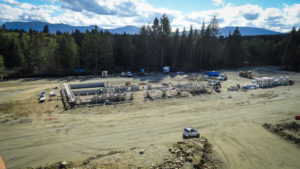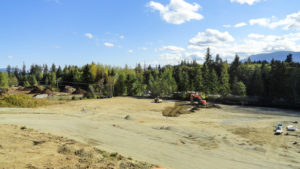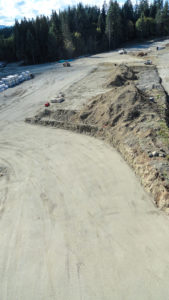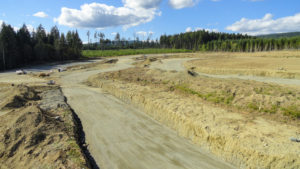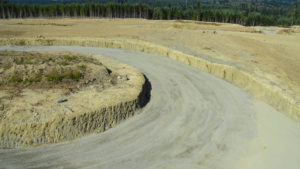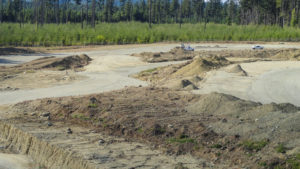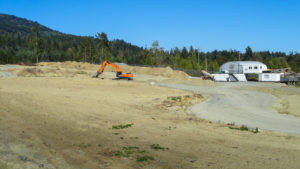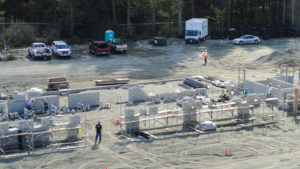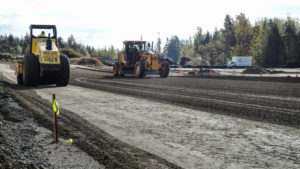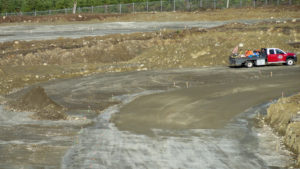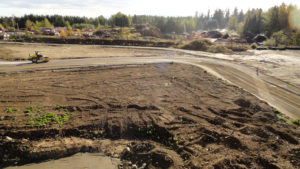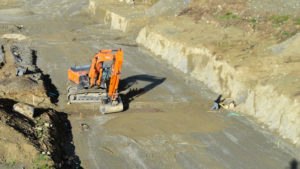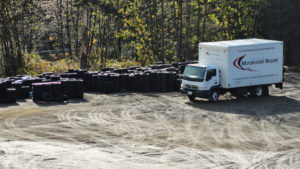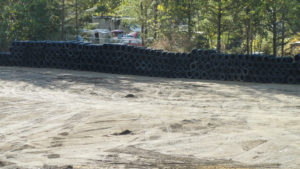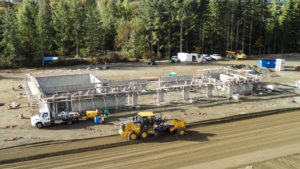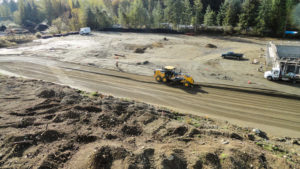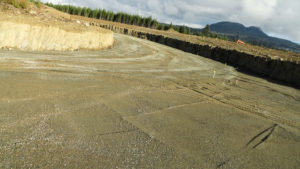Under the direction of Chris Erb, construction of the Vancouver Island Motorsport Resort continues to move ahead smoothly.
The concrete foundation of the clubhouse having been completed, the masonry stage of construction is now underway. The various entrances into the building, including the garage doors facing the pit lane are clearly evident. The walls are quickly rising and, with additional brick-layers coming in next week, further progress will be made rapidly. The structural steel for the clubhouse is expected to be installed by the end of September, with the roof joists scheduled to be in place by the middle of October. With all staying on course, the clubhouse will have its roof and be watertight by late November 2015.
Once the exterior of the building is completed, attention will then turn to the interior. Given the large open spaces, this is expected to proceed rapidly.
The past few weeks of rain have been extremely beneficial as this has helped reduce the amount of dust on-site, and perhaps, more importantly, has helped with the compaction of the prepared track surface. Chris Erb explained that “Moisture helps the base settle properly, and forces air out.” He continued, “Think of it in terms of a vibrator in cement; the principle is the same.”
While some work remains to be completed on the short cuts that provide a link between different sections of the track, the circuit is effectively graded to meet the design specifications. It’s clear to see what Tilke GMBH & Co had in mind when they designed the circuit. Forms to create the curbing will begin to be placed within the next week. The track will then receive a light “crush” topping (a light aggregate) prior to final grading. A last rolling will be performed before paving.
By mid to late October, paving will begin with the first of three layers of asphalt. This initial layer will see the first 50mm being placed. Upon completion, the paved track surface will total 150mm, nearly twice that of an average highway. This depth of paving is required to withstand the staggering forces generated by cars using the track. These forces are at their most extreme during braking and cornering. Hard braking places downward force onto the pavement, while high cornering speeds will subject the track surface to significant lateral forces. Without a properly designed surface, the track would soon begin to shift and break apart.
A large stack of tires is accumulating a short distance from the clubhouse. These will eventually be formed into the barriers that provide just one of the safety measures to be installed.
While the design drawings have expectedly created excitement among enthusiasts and potential members, the progress we anticipate over the next few weeks will make it possible to fully appreciate the scale and the vision for the Vancouver Island Motorsport Resort.
We’ll continue to update the next exciting steps that will help move the motorsport resort that much closer to its Spring 2016 opening. We’ll be ready. Will you?
Close
